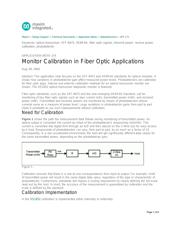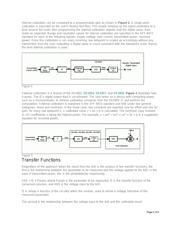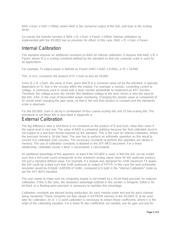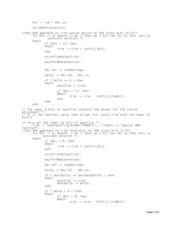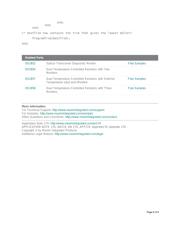下载

Maxim > Design Support > Technical Documents > Application Notes > Optoelectronics > APP 174
Keywords: optical transceiver, SFF-8472, XENPAK, fiber optic signals, transmit power, receive power,
calibration, photodetector
APPLICATION NOTE 174
Monitor Calibration in Fiber Optic Applications
Aug 29, 2002
Abstract: This application note focuses on the SFF-8472 and XENPAK standards for optical modules. It
shows how variations in photodetector gain affect measured power levels. Photodetectors are calibrated
for fiber optic apps. Internal and external calibration methods for an optical transceiver monitor are
shown. The DS1852 optical transceiver diagnostic monitor is featured.
Fiber optic standards, such as the SFF-8472 and the now emerging XENPAK Standard, call for
monitoring of key fiber optic signals such as bias current (mA), transmitted power (mW), and received
power (mW). Transmitted and received powers are monitored by means of photodetectors whose
currents serve as a measure of power level. Large variations in photodetector gains from part to part
make it unreliable to use such measurements without calibration.
Need for Calibration
Figure 1 shows the path the measurement data follows during monitoring of transmitted power. An
optical output is converted into current by virtue of the photodetector's responsivity (mA/mW). This
current is converted into digital form through an A/D and then placed on the 2-Wire bus for easy access
by a host. Responsivity of photodetectors can vary, from part to part, by as much as a factor of 10.
Consequently, in a raw uncalibrated environment, the host will get significantly different data values for
the same transmitted power, depending on the photodetector gain.
Figure 1.
Calibration ensures that there is a one-to-one correspondence from input to output. For example, 1mW
of transmitted power will result in the same digital data value, regardless of the type or characteristic of
photodetector. Furthermore, standards will impose a scaling requirement by clearly defining the full-scale
read-out by the host. In short, the accuracy of the measurement is guaranteed by calibration and the
scale is defined by the standard.
Calibration Implementation
In the DS1852 calibration is implemented either internally or externally.
Page 1 of 6


